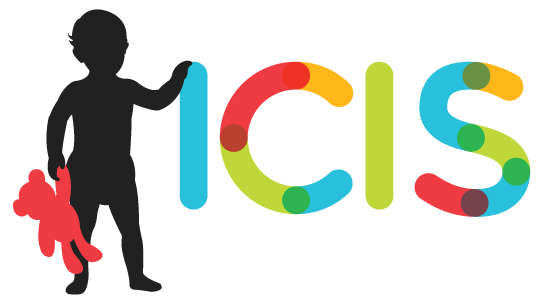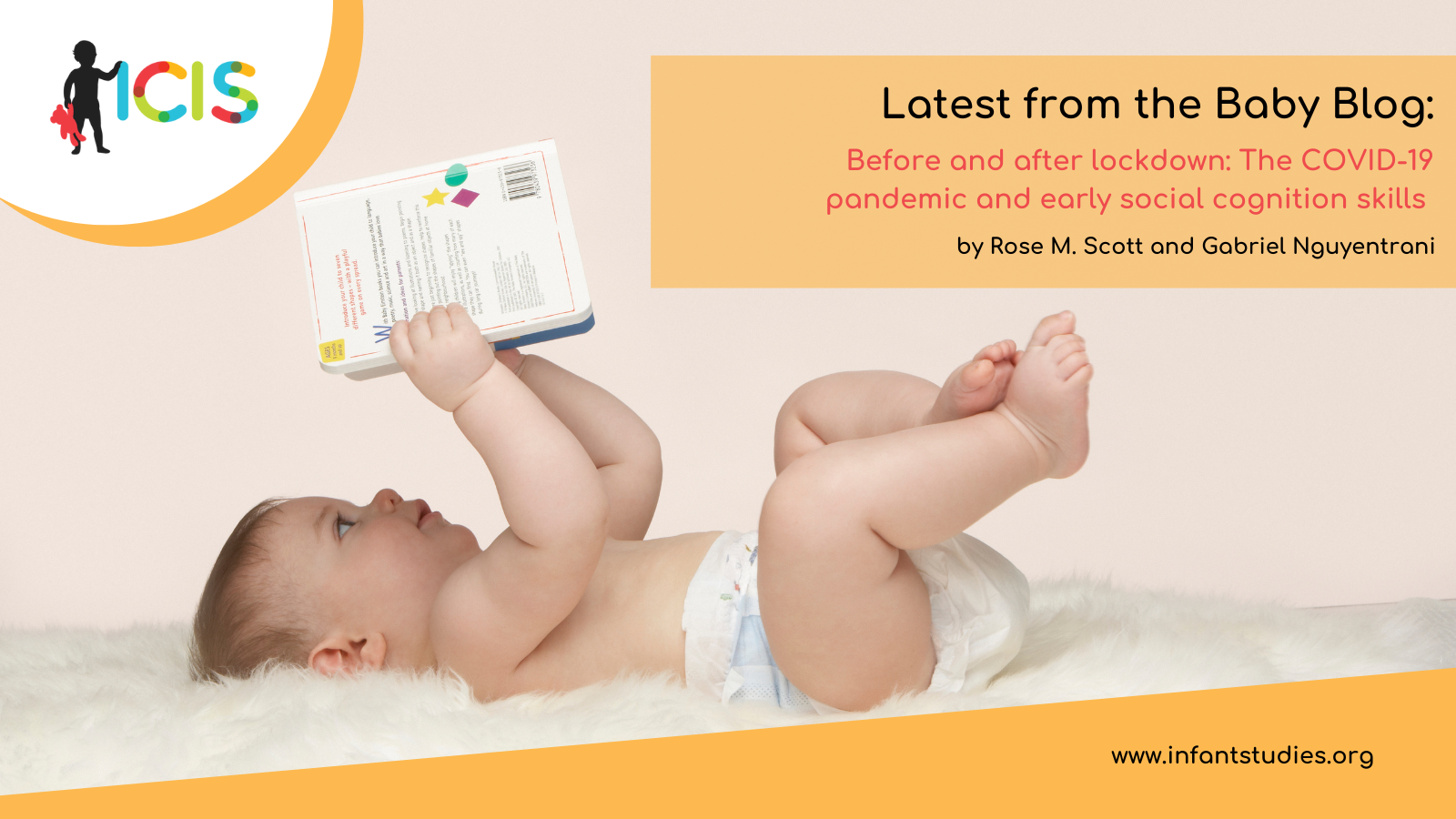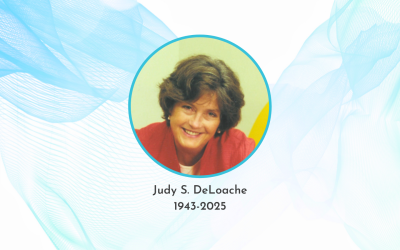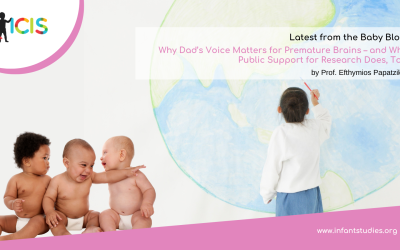How did these changes affect children and families?
Given school-closures and the transition to remote learning, much of the work on this question has understandably focused on school-aged children. This work has identified negative effects on family functioning1,2, children’s mental health and emotional well-being3,4, and broad learning delays5,6. For instance, a meta-analysis by Betthäuser et al.5 found that during lockdowns children lost over a third of a school years’ worth of learning and this loss remained present even after returns to in-person schooling7.
But school-aged children were not the only ones impacted by the pandemic. Several studies suggest that preschoolers exhibited overall developmental delays and learning losses relative to pre-pandemic cohorts8, especially children from lower socioeconomic status (SES) backgrounds9. Changes in family dynamics and social interaction patterns also impacted younger infants and toddlers, who experienced increases in screen time9,10 and slower vocabulary development10.
Yet little work has examined potential impacts of the pandemic on the development of social cognition skills in early childhood. This is a key oversight given substantial evidence that the development of such skills is tied to children’s social interactions12,13,14, which shifted considerably during the pandemic.
In a recent study15, we sought to address this gap in the literature by focusing on preschooler’s false-belief understanding. We happened to be in the midst of a large-scale study on children’s social cognition when the lab was forced to close for pandemic lockdowns in March 2020. The study resumed in September 2021 when pandemic restrictions were lifted on our campus. We took advantage of this accidental cohort study to examine whether false-belief understanding differed in children tested before versus after pandemic lockdowns.
Children between 3.5 and 5.5 years of age completed a range of tasks that included two traditional elicited-response false-belief tasks16,17, as well as a low-demand elicited-response task that children typically pass at younger ages18,19. We found that children in the post-pandemic cohort performed worse on both types of tasks than children tested before the pandemic. In addition, the difference in performance between the two cohorts was larger for children from lower SES backgrounds.
Although our findings are cross-sectional, they suggest that the pandemic negatively impacted the development of children’s social cognition skills, especially children from lower SES backgrounds. Given that performance on traditional false-belief tasks is positively correlated with a range of other developmental outcomes such as cooperation and prosocial behavior20,21, it is possible that these negative impacts extend beyond false-belief understanding.
Within the post-pandemic cohort, we did not find any differences based on the date that children were tested, which ranged from September 2021 to May 2024. In California, the shelter-in-place order was lifted in June 2021. This suggests that even children who were tested three years post-lockdown exhibited poorer performance relative to pre-pandemic cohorts. This finding is consistent with the finding that learning losses for school-aged children have persisted, even several years after children returned to in-person schooling5,7. This in turn raises the question of whether children who experienced pandemic lockdown will continue to exhibit differences in social cognition at later ages, or whether these differences will diminish across middle childhood.
Similarly, it is an open question whether differences in social cognition skills will be evident for children born post-lockdown. Although many aspects of daily life have returned to pre-pandemic ‘normal’, some differences remain: remote work and online education have become more commonplace, and some studies suggest that levels of social interaction remain reduced relative to before the pandemic22,23. These continuing differences in children’s social environment raise the possibility that children born post-lockdown might exhibit different developmental trajectories relative to pre-pandemic cohorts.
Our findings also have methodological implications. We used traditional false-belief tasks that have been widely used for decades with well-established patterns of performance. Yet we found that children tested post-pandemic performed below chance on these tasks at an age when they would typically succeed. It seems plausible that other paradigms, especially those that measure social cognition skills or rely heavily on social interactions, might also yield different patterns of performance post-pandemic. If so, then it is relevant to ongoing conversations regarding replication and reproducibility within the field. Our findings suggest that differences between studies conducted pre- and post-pandemic should be interpreted with caution, as such differences could reflect meaningful cohort differences in children’s behavior.
References:
- Chung, G., Lanier, P., & Wong, P. Y. J. (2022). Mediating effects of parental stress on harsh parenting and parent-child relationship during coronavirus (COVID-19) pandemic in Singapore. Journal of Family Violence, 37(5), 801-812. https://doi.org/10.1007/s10896-020-00200-1.
- Schmidt, A., Kramer, A. C., Brose, A., Schmiedek, F., & Neubauer, A. B. (2021). Distance learning, parent–child interactions, and affective well-being of parents and children during the COVID-19 pandemic: A daily diary study. Developmental Psychology, 57(10), 1719-1734. https://doi.org/10.1037/dev0001232.
- Samji, H., Wu, J., Ladak, A., Vossen, C., Stewart, E., Dove, N., Long, D., & Snell, G. (2022). Mental health impacts of the COVID‐19 pandemic on children and youth–a systematic review. Child and Adolescent Mental Health, 27(2), 173-189. doi:10.1111/camh.12501.
- Viner, R., Russell, S., Saulle, R., Croker, H., Stansfield, C., Packer, J., Nicholls, D., Goddings, A., Bonnell, C., Hudson, L., Hope, S., Ward, J., Schwalbe, N., Morgan, A., & Minozzi, S. (2022). School closures during social lockdown and mental health, health behaviors, and well-being among children and adolescents during the first COVID-19 wave: a systematic review. JAMA Pediatrics, 176(4), 400-409.
- Betthäuser, B. A., Bach-Mortensen, A. M., & Engzell, P. (2023). A systematic review and meta-analysis of the evidence on learning during the COVID-19 pandemic. Nature Human Behaviour, 7(3), 375-385. https://doi.org/10.1038/s41562-022-01506-4.
- Engzell, P., Frey, A., & Verhagen, M. D. (2021). Learning loss due to school closures during the COVID-19 pandemic. Proceedings of the National Academy of Sciences, 118(17), e2022376118. https://doi.org/10.1073/pnas.2022376118.
- Kuhfeld, M. & Lewis, K. (2025, March 18). 5 years after COVID-19 hit: Test data converge on math gains, stalled reading recovery. Brookings. https://www.brookings.edu/articles/5-years-after-covid-19-hit-test-data-converge-on-math-gains-stalled-reading-recovery/
- Sato, K., Fukai, T., Fujisawa, K. K., & Nakamuro, M. (2023). Association between the COVID-19 pandemic and early childhood development. JAMA Pediatrics, 177(9), 930-938. doi:10.1001/jamapediatrics.2023.2096.
- González, M., Loose, T., Liz, M., Pérez, M., Rodríguez‐Vinçon, J. I., Tomás‐Llerena, C., & Vásquez‐Echeverría, A. (2022). School readiness losses during the COVID‐19 outbreak. A comparison of two cohorts of young children. Child Development, 93(4), 910-924. DOI: 10.1111/cdev.13738
- Bergmann, C., Dimitrova, N., Alaslani, K., Almohammadi, A., Alroqi, H., Aussems, S., Barokova, M., Davies, C., Gonzalez-Gomez, N., Gibson, S.P., Havron, N., Horowitz Kraus, T., Kanero, J., Kartushina, N., Keller, C., Mayor, J., Mundry, R., Shinskey, J., & Mani, N. (2022). Young children’s screen time during the first COVID-19 lockdown in 12 countries. Scientific Reports, 12(1), 2015. https://doi.org/10.1038/s41598-022-05840-5.
- Hartshorne, J. K., Huang, Y. T., Paredes, P. M. L., Oppenheimer, K., Robbins, P. T., & Velasco, M. D. (2021). Screen time as an index of family distress. Current Research in Behavioral Sciences, 2, 100023. https://doi.org/10.1016/j.crbeha.2021.100023.
- Devine, R. T., & Hughes, C. (2018). Family correlates of false belief understanding in early childhood: A meta‐analysis. Child Development, 89(3), 971-987. https://doi.org/10.1111/cdev.12682.
- Lane, J. D., & Bowman, L. C. (2021). How children’s social tendencies can shape their theory of mind development: Access and attention to social information. Developmental Review, 61, 100977. https://doi.org/10.1016/j.dr.2021.100977.
- Suway, J. G., Degnan, K. A., Sussman, A. L., & Fox, N. A. (2012). The relations among theory of mind, behavioral inhibition, and peer interactions in early childhood. Social Development, 21(2), 331-342. https://doi.org/10.1111/j.1467-9507.2011.00634.x.
- Scott, R. M., Nguyentran, G., & Sullivan, J. Z. (2024). The COVID-19 pandemic and social cognitive outcomes in early childhood. Scientific Reports, 14(1), 28939.
- Baron-Cohen, S., Leslie, A. M., & Frith, U. (1985). Does the autistic child have a “theory of mind”? Cognition, 21(1), 37-46. https://doi.org/10.1016/0010-0277(85)90022-8.
- Gopnik, A., & Astington, J. W. (1988). Children’s understanding of representational change and its relation to the understanding of false belief and the appearance–reality distinction. Child Development, 59, 26–37. https://doi.org/10.2307/1130386.
- Scott, R. M., Roby, E., & Setoh, P. (2020). 2.5-year-olds succeed in identity and location elicited-response false-belief tasks with adequate response practice. Journal of Experimental Child Psychology, 198, 104890. https://doi.org/10.1016/j.jecp.2020.104890.
- Setoh, P., Scott, R. M., & Baillargeon, R. (2016). Two-and-a-half-year-olds succeed at a traditional false-belief task with reduced processing demands. Proceedings of the National Academy of Sciences, 113(47), 13360-13365. https://doi.org/10.1073/pnas.1609203113.
- Caputi, M., Lecce, S., Pagnin, A., & Banerjee, R. (2012). Longitudinal effects of theory of mind on later peer relations: the role of prosocial behavior. Developmental Psychology, 48(1), 257-270. https://doi.org/10.1037/a0025402.
- Imuta, K., Henry, J. D., Slaughter, V., Selcuk, B., & Ruffman, T. (2016). Theory of mind and prosocial behavior in childhood: A meta-analytic review. Developmental Psychology, 52(8), 1192-1205. http://dx.doi.org/10.1037/dev0000140.
- Jarvis, C. I., Coletti, P., Backer, J. A., Munday, J. D., Faes, C., Beutels, P., … & Edmunds, W. J. (2024). Social contact patterns following the COVID-19 pandemic: a snapshot of post-pandemic behaviour from the CoMix study. Epidemics, 48, 100778.
- Jeong, H., Park, S., Chun, J. Y., Ohmagari, N., Kim, Y., & Tsuzuki, S. (2025). Chronological trend of social contact patterns in Japan after the emergence of COVID-19. Journal of Infection and Public Health, 18(2), 102629.
About the Author

Rose M. Scott
University of California, Merced
Rose M. Scott, Ph.D., is a Professor of Psychological Sciences at the University of California, Merced. Her research examines the development of social cognition in early childhood. Her recent work focuses on how social cognition is shaped by environmental factors such as parent-child conversations and family socioeconomic background.

Gabriel Nguyentran
University of California, Merced
Gabriel Nguyentran is a Ph.D. student in Psychological Sciences at the University of California, Merced. His research interests revolve around how children reason about social status hierarchies and how these hierarchies can impact cognitive development. His ongoing doctoral work explores the origins of children’s beliefs about social status and whether these beliefs influence moral reasoning and behaviors.




